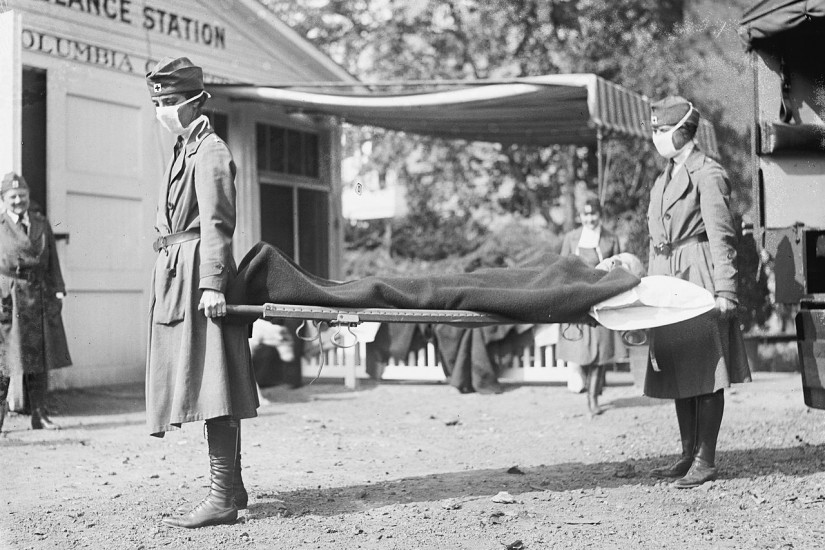Across the country, public officials were lying. U.S. Surgeon General Rupert Blue said, “There is no cause for alarm if precautions are observed.” New York City’s public health director declared “other bronchial diseases and not the so-called Spanish influenza...[caused] the illness of the majority of persons who were reported ill with influenza.” The Los Angeles public health chief said, “If ordinary precautions are observed there is no cause for alarm.”
For an example of the press’s failure, consider Arkansas. Over a four-day period in October, the hospital at Camp Pike admitted 8,000 soldiers. Francis Blake, a member of the Army’s special pneumonia unit, described the scene: “Every corridor and there are miles of them with double rows of cots ...with influenza patients...There is only death and destruction.” Yet seven miles away in Little Rock, a headline in the Gazette pretended yawns: “Spanish influenza is plain la grippe—same old fever and chills.”
People knew this was not the same old thing, though. They knew because the numbers were staggering—in San Antonio, 53 percent of the population got sick with influenza. They knew because victims could die within hours of the first symptoms—horrific symptoms, not just aches and cyanosis but also a foamy blood coughed up from the lungs, and bleeding from the nose, ears and even eyes. And people knew because towns and cities ran out of coffins.
People could believe nothing they were being told, so they feared everything, particularly the unknown. How long would it last? How many would it kill? Who would it kill? With the truth buried, morale collapsed. Society itself began to disintegrate.
In most disasters, people come together, help each other, as we saw recently with Hurricanes Harvey and Irma. But in 1918, without leadership, without the truth, trust evaporated. And people looked after only themselves.
In Philadelphia, the head of Emergency Aid pleaded, “All who are free from the care of the sick at home... report as early as possible...on emergency work.” But volunteers did not come. The Bureau of Child Hygiene begged people to take in—just temporarily—children whose parents were dying or dead; few replied. Emergency Aid again pleaded, “We simply must have more volunteer helpers....These people are almost all at the point of death. Won’t you...come to our help?” Still nothing. Finally, Emergency Aid’s director turned bitter and contemptuous: “Hundreds of women...had delightful dreams of themselves in the roles of angels of mercy...Nothing seems to rouse them now...There are families in which the children are actually starving because there is no one to give them food. The death rate is so high and they still hold back.”
